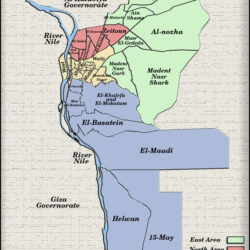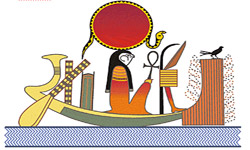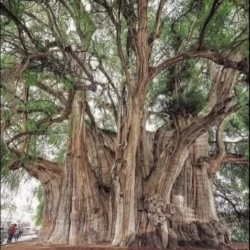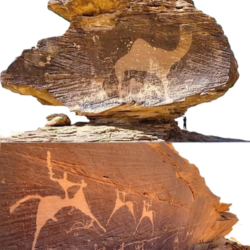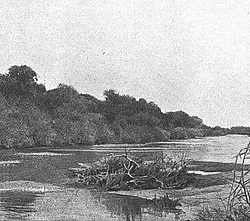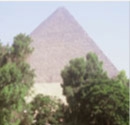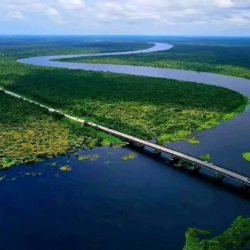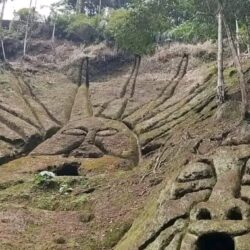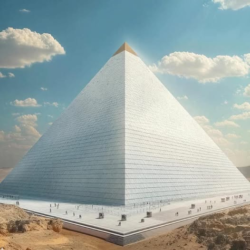The Nile Crocodile (Crocodylus niloticus) is one of the most formidable reptiles on Earth. Known for its powerful build and fearsome bite, this ancient creature has roamed Africa’s rivers for millions of years. As the second-largest reptile on the planet, it evokes both awe and fear.
Historical Presence in the Nile River
Historically, the Nile Crocodile was abundant along the Nile River, revered and feared by ancient Egyptians. Over time, with increasing human settlement and environmental changes, their numbers dwindled—especially near populated regions. However, recent reports suggest these giants are making a resurgence behind the Aswan Dam, where the ecosystem allows for better survival and reproduction.
Distinctive Features of the Nile Crocodile
Physical Appearance and Size
The adult Nile Crocodile can reach over 10 feet long, with exceptional individuals growing up to 20 feet. These reptiles can weigh up to 1500 pounds, with rough, scaly skin ranging from grayish-green to dark olive in color.
Unique Skin Structure and Growth
Unlike most reptiles that shed their skin periodically, the Nile Crocodile’s skin grows continuously with its body. This unique trait gives it an edge in strength and durability, making its hide highly valued.
Snout Shape and Teeth Differences
Though crocodiles resemble alligators, they are easily distinguished by their longer, narrower snouts and the distinctive placement of their fourth tooth, which protrudes outside the upper jaw—a key identifier.
Habitat and Distribution
Natural Habitat Across Africa
The Nile Crocodile is widely distributed across sub-Saharan Africa, living in rivers, lakes, marshes, and swamps. They prefer freshwater bodies but have also been found in brackish environments.
Return Behind the Aswan Dam
Recent observations confirm that Nile Crocodiles have started appearing behind the Aswan High Dam, possibly due to controlled water flows and reduced human interference. This area offers ideal nesting sites and abundant prey.
Interaction with Other Wildlife
These apex predators influence their ecosystems by controlling fish and mammal populations. They often share habitats with hippos, birds, and fish species, shaping the aquatic food chain.
Hunting and Feeding Behavior
Ambush Predator Tactics
The Nile Crocodile is a master ambusher. It stays nearly motionless in the water, waiting for unsuspecting prey to approach. When the moment is right, it launches forward with lightning speed, dragging its victim underwater.
Diet of the Nile Crocodile
Their diet includes fish, birds, mammals, and even other reptiles. In some cases, they attack large animals like zebras or antelope that wander too close to water sources.
Role in the Ecosystem
As apex predators, they help maintain healthy ecosystems by culling weak or sick animals. Their presence often indicates a thriving aquatic environment.
Movement and Locomotion
How Crocodiles Swim
Though their back feet are webbed, crocodiles primarily use their powerful tails for propulsion in water. Their bodies are streamlined, making them efficient swimmers.
Speed on Land and the “Gallop” Myth
While often seen as sluggish on land, Nile Crocodiles can gallop at speeds up to 30 miles per hour over short distances—a surprising feat for such heavy creatures.
Adaptations for Land and Water
Their body structure allows them to slide easily into the water and crawl or run on land when needed. This dual adaptation is key to their survival and hunting success.
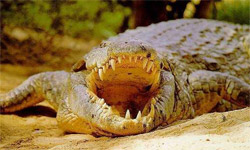
Nile Crocodile vs. Other Reptiles
Differences Between Crocodiles and Alligators
While crocodiles and alligators may look alike, the Nile Crocodile can be told apart by several key features:
- Snout shape: Nile Crocodiles have a longer, V-shaped snout, while alligators have broader, U-shaped ones.
- Teeth alignment: A Nile Crocodile’s fourth tooth in the lower jaw is visible even when its mouth is closed.
- Habitat: Nile Crocodiles inhabit African rivers, while alligators are mostly found in the southeastern United States and China.
Comparison with Other Crocodile Species
Compared to saltwater or mugger crocodiles, the Nile Crocodile is:
- More aggressive and territorial
- Often larger than other African croc species
- Better adapted to freshwater habitats
Lifecycle and Reproduction
Mating Rituals
During the mating season, male Nile Crocodiles engage in vocalizations, water slaps, and physical displays to attract females. Dominant males often secure breeding rights to the best nesting areas.
Nesting and Hatching
Females dig holes in sandy banks and lay 25–80 eggs. After incubation (around 90 days), the mother helps hatchlings emerge and often carries them to water in her mouth—a surprisingly gentle act from such a fearsome animal.
Juvenile Survival Challenges
Despite the mother’s care, only a small percentage of hatchlings survive due to threats from predators like monitor lizards, birds, and even adult crocodiles. Their vulnerability in the early stages makes every survivor critical to species continuation.
Human Interaction and Danger
Historical Conflicts
Ancient Egyptians respected and feared the Nile Crocodile. Temples were built in honor of Sobek, the crocodile god, believed to bring fertility and protection. However, crocs also took a toll on local populations, leading to conflicted relationships over centuries.
Modern Human Encounters
Nile Crocodiles still pose risks today, especially in rural areas. They are responsible for hundreds of attacks on humans each year, making them one of the deadliest animals in Africa.
Safety Tips Around Crocodile Habitats
To stay safe:
- Avoid swimming in crocodile-infested waters.
- Stay at least 15 feet away from riverbanks, especially during nesting season.
- Never provoke or approach a crocodile—even if it looks slow or asleep.
Conservation Status and Efforts
Threats to Nile Crocodile Populations
Although the Nile Crocodile is currently listed as Least Concern by the IUCN, it faces threats from:
- Habitat destruction
- Illegal hunting for skins
- Pollution and dam construction
Protection Laws and Programs
Several African countries have implemented strict wildlife protection laws, including bans on unlicensed crocodile hunting and trade. Community-led conservation efforts are also growing.
Reintroduction Success Behind Aswan Dam
The Aswan High Dam has unexpectedly become a safe haven for Nile Crocodiles, where controlled environments have led to a slow but noticeable comeback of this ancient predator.
Cultural and Mythological Significance
Ancient Egyptian Beliefs
In Egyptian mythology, the crocodile god Sobek represented power, strength, and fertility. He was worshipped in temples, and mummified crocodiles have been found in tombs—proof of the creature’s revered status.
Symbolism in African Folklore
In many African communities, the crocodile is a symbol of cunning, resilience, and dominance. Folktales often portray it as both a wise and fearsome creature that commands respect.
Research and Scientific Interest
Ongoing Studies and Discoveries
Researchers continue to study Nile Crocodiles for their immune systems, predatory behaviors, and evolutionary traits. Their ability to survive in harsh environments makes them a fascinating subject for scientists.
Importance in Biodiversity Studies
The presence and health of Nile Crocodile populations often reflect the overall health of aquatic ecosystems. As apex predators, their roles help regulate biodiversity.
Nile Crocodile in Zoos and Captivity
Role of Captive Breeding
Many zoos and conservation centers breed Nile Crocodiles in captivity to:
- Reduce wild captures
- Educate the public
- Reintroduce crocs to safe habitats when possible
Educational Importance
These reptiles help people learn about African ecosystems, evolution, and the importance of wildlife protection.
Ethical Considerations
Care must be taken to ensure ethical treatment, adequate space, and mental stimulation for crocs in captivity. Responsible zoos follow international welfare standards.
Amazing Facts About the Nile Crocodile
Record Sizes and Lifespan
- Can live up to 70–100 years
- Largest verified specimen: 20 feet and over 2,000 pounds
Unusual Behaviors
- Capable of cooperative hunting
- Use vocalizations to communicate with hatchlings
- Known to “sunbathe” to regulate body temperature
Eye and Tail Adaptations
- Nictitating membranes protect their eyes underwater
- Their tails store energy and fat, making them powerful swimmers and resilient hunters
Frequently Asked Questions (FAQs)
Are Nile Crocodiles Endangered?
No, they are listed as Least Concern, but localized threats could change that without continued protection.
How Fast Can a Nile Crocodile Move?
On land, they can reach up to 30 miles per hour in short bursts—especially when threatened.
Can Nile Crocodiles Be Tamed?
No, they remain wild and dangerous animals not suitable for taming.
Do Nile Crocodiles Still Live in the Nile River?
Yes, especially south of the Aswan Dam, where conditions have allowed their return.
What Do Nile Crocodiles Eat?
They eat fish, birds, antelope, zebra, and even other crocodiles on occasion.
How Do You Stay Safe Near Them?
Avoid riverbanks, follow local guidelines, and never swim or wade where crocodiles are present.
Why the Nile Crocodile Deserves Respect and Protection
Importance
The Nile Crocodile is not just a fearsome predator—it’s an integral part of African ecosystems and cultures. From its role in food chains to its place in mythology, its survival is deeply connected to the natural balance of riverine life.
Conservation
Their return behind the Aswan Dam is a sign of resilience, but ongoing conservation efforts are vital. Understanding and respecting these majestic reptiles is the first step toward ensuring they thrive for generations to come.

